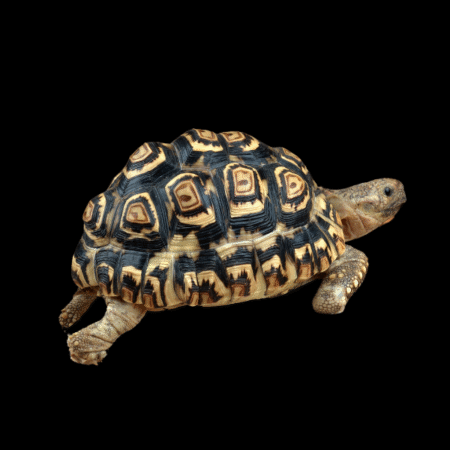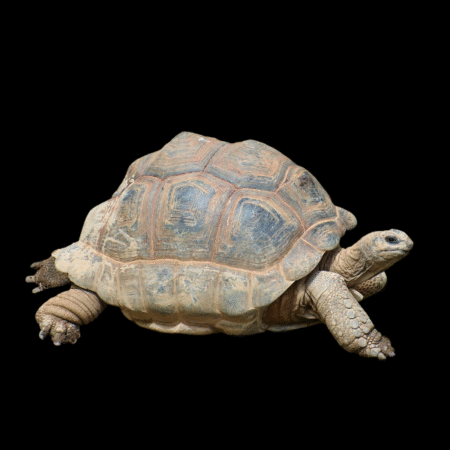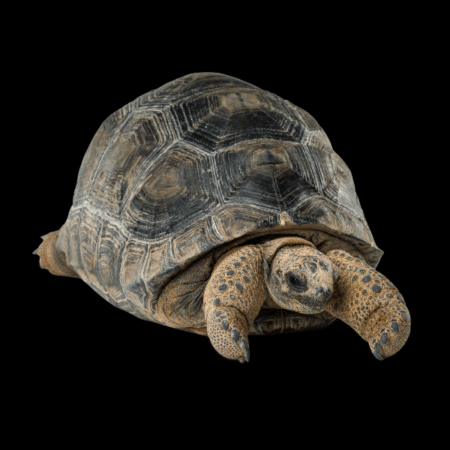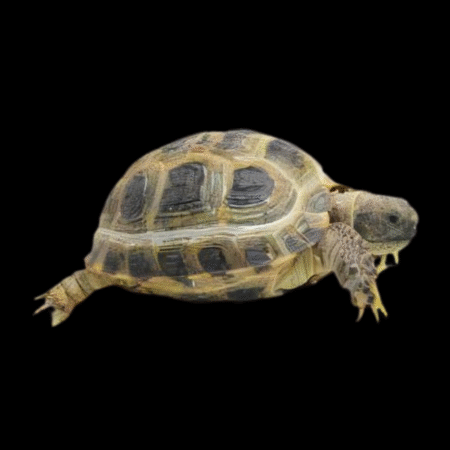Description
Burmese Brown Mountain Tortoise
Scientific Name: Manouria emys
Common Names: Burmese Brown Tortoise, Brown Mountain Tortoise, Emys Tortoise
Overview
The Burmese Brown Mountain Tortoise (Manouria emys) is a species of tortoise native to Southeast Asia, particularly found in the dense forests of Myanmar (Burma), Thailand, Laos, and parts of Vietnam. This species is recognized for its striking appearance, with a smooth, brownish shell, often with yellowish or orange markings, and its relatively large size. Burmese Brown Mountain Tortoises are semi-terrestrial, spending much of their time in the forest floor, where they burrow and feed on a variety of vegetation. They are typically more arboreal and prefer shaded, humid environments, making them more challenging to care for compared to other species.
Key Information
Size: 12–18 inches (30–45 cm)
Weight: 15–30 pounds (6.8–13.6 kg)
Lifespan: 50–70 years (with proper care)
Diet: Herbivore
Temperament: Generally calm and shy
Habitat & Setup
Habitat: Native to dense tropical and subtropical forests in Southeast Asia. These tortoises live in humid, shady environments with abundant leaf litter and access to fresh water.
Outdoor Enclosure Size: A minimum of 150 square feet for a single tortoise, though larger enclosures are ideal due to their size and activity level.
Substrate: A deep layer of natural soil, mulch, and leaf litter is best for simulating the forest floor environment. The substrate should be moist but well-drained to mimic their natural habitat.
Shelter: Provide a shaded area to hide from the heat of the day. These tortoises also enjoy burrowing, so a sheltered hiding spot is essential.
Climate: Burmese Brown Mountain Tortoises thrive in warm, humid conditions. The temperature should be kept between 75–85°F (24–29°C) during the day, with a drop to 65–75°F (18–24°C) at night. Humidity should be maintained at around 60–80%.
Humidity: High humidity (60–80%) is necessary to replicate their natural environment, but care should be taken not to make the environment too wet or soggy, which could cause respiratory issues.
Diet & Feeding
Diet Type: Herbivore
Suitable Foods:
Leafy greens such as collard greens, mustard greens, dandelion greens, and turnip greens
Edible flowers like hibiscus, clover, and dandelions
Vegetables like squash, carrots, and pumpkin
Grasses and hay
Feeding Frequency: Offer fresh food daily. Provide a balanced, high-fiber diet with minimal protein. Avoid high-oxalate greens like spinach in excess.
Water: Fresh water should always be available for drinking and soaking. Occasional soaking can help maintain hydration and promote proper digestion.
Care Notes
Activity Level: Burmese Brown Mountain Tortoises are relatively active and enjoy foraging for food. They can be more arboreal than many other tortoises, spending time in higher areas of their enclosure if climbing structures are provided.
Health: Ensure a diet high in fiber and low in protein to prevent shell deformities. Access to UVB light is essential for proper calcium metabolism and shell health. Monitor their weight and shell condition regularly.
Social Nature: These tortoises are typically solitary but can tolerate the presence of others if provided with adequate space. They are generally shy and will hide when stressed.
Breeding: Breeding in captivity can be difficult, as Burmese Brown Mountain Tortoises are not prolific breeders. Mating behavior often takes place during the rainy season in their native range.
Conservation Status
Conservation Status: Vulnerable (IUCN Red List)
Threats: Habitat destruction and the encroachment of agriculture in their native range
Conservation Efforts: Burmese Brown Mountain Tortoises are protected in many parts of their range, but their populations are in decline due to habitat destruction. Conservation efforts focus on habitat preservation and captive breeding programs.
Fun Fact
The Burmese Brown Mountain Tortoise is one of the few tortoises that have a more arboreal lifestyle, meaning they sometimes climb over logs and vegetation to access food and shelter, a behavior not commonly observed in other tortoise species. Their slow movement and shy nature make them a peaceful, yet fascinating species to observe.





